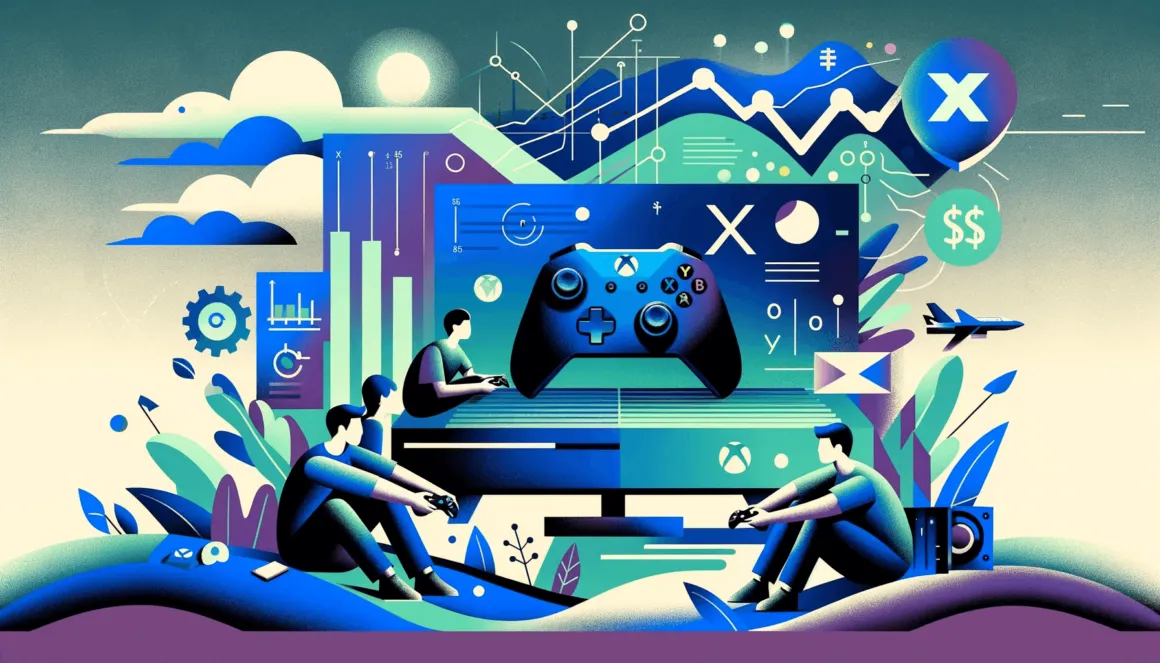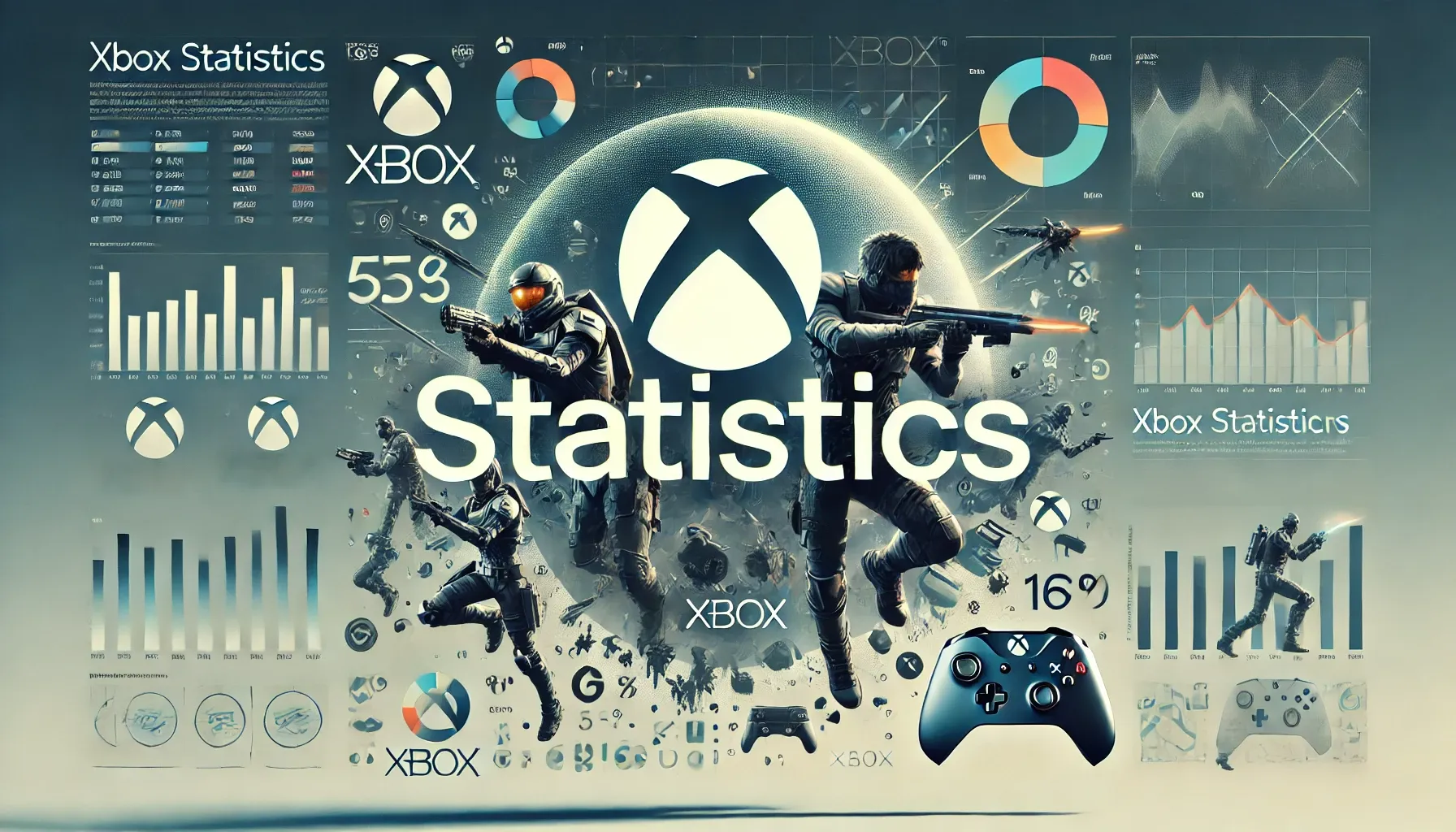In the world of gaming, Xbox has carved a niche for itself as one of the leading consoles in the market. With its advanced features, innovative games, and loyal fanbase, Xbox has become a household name for gamers worldwide. But what truly sets it apart from other consoles is its impressive statistics. From sales figures to user demographics, there is a lot to uncover about the growth, impact, and future of Xbox. In this article, we will take a deep dive into the world of Xbox statistics and explore how this console has evolved over the years.
1. History of Xbox: From Humble Beginnings to a Global Phenomenon

Before we delve into the statistics, let’s take a trip down memory lane and explore the history of Xbox. It all started in 1998 when Microsoft first showed an interest in developing a gaming console to compete with Sony’s PlayStation and Nintendo’s GameCube. After two years of research and development, Xbox was finally launched in November 2001, marking Microsoft’s entry into the gaming industry.
The Launch of Xbox: A New Era of Gaming
The original Xbox was released with an impressive lineup of games, including the critically acclaimed “Halo: Combat Evolved.” It also introduced the concept of online gaming with its built-in Ethernet port, allowing players to connect and play with others around the world. This feature proved to be a game-changer and set the foundation for Xbox’s future success.
As expected, the initial sales were not on par with its competitors, but with time, Xbox started gaining momentum. By the end of its first year, Xbox had sold over 1.5 million units, and by the end of 2002, it had reached the 4 million mark. Its popularity continued to grow, and by the time it was discontinued in 2006, Xbox had sold over 24 million units worldwide.
The Launch of Xbox 360: A Major Leap in the Gaming Industry
After the success of the original Xbox, Microsoft set its sights on developing a new and improved console. In November 2005, Xbox 360 was released, marking a significant leap forward in the gaming industry. With better graphics, more storage, and an impressive lineup of games, Xbox 360 quickly became the go-to choice for gamers.
The release of Xbox 360 also marked the beginning of the “Console Wars,” with Sony’s PlayStation 3 and Nintendo’s Wii as its main competitors. Despite tough competition, Xbox 360 continued to dominate sales, thanks to its superior hardware and exclusive titles like “Gears of War” and “Halo 3.”
Xbox One: Merging Gaming and Entertainment
In November 2013, Microsoft released the third installment of the Xbox series, the Xbox One. With this console, Microsoft aimed to merge gaming and entertainment by introducing features like live TV, streaming services, and voice command through its Kinect sensor. However, the initial response from gamers was not as enthusiastic as expected.
Xbox One faced stiff competition from PlayStation 4, which was released around the same time. Despite launching with a higher price point and a controversial online-only policy, Xbox One managed to sell over 1 million units within 24 hours of its release. However, it fell short when compared to PlayStation 4, which sold over 2.1 million units in the same period.
2. Sales Figures: Numbers That Speak for Themselves
One of the most significant factors that determine the success of any gaming console is its sales figures. Let’s take a closer look at how Xbox has fared in terms of sales over the years.
Overall Sales Figures
Since its launch in 2001, Xbox has sold over 100 million units worldwide. This staggering number includes all three consoles in the Xbox series, making it one of the bestselling gaming consoles of all time. It also holds the record for being the best-selling console in the United States for 32 consecutive months, beating its closest competitor, PlayStation 2.
Sales Figures by Console
- Original Xbox: As mentioned earlier, the original Xbox sold over 24 million units during its five-year run, with its highest sales numbers in North America and Europe.
- Xbox 360: The release of Xbox 360 saw a significant surge in sales, with over 84 million units sold to date. It remains the bestselling console in the Xbox series, with its biggest market in the United States, followed by Europe.
- Xbox One: Despite facing tough competition from PlayStation 4, Xbox One has managed to sell over 46 million units worldwide. Its largest market is once again the United States, followed by Europe and Asia.
Top-Selling Games on Xbox Consoles
One of the reasons for Xbox’s popularity is its impressive lineup of games. Let’s take a look at the top-selling games on Xbox consoles to get a better understanding of what drives sales.
- Halo Series: With over 80 million copies sold, the “Halo” series is undoubtedly the most popular game on Xbox. The first installment, “Halo: Combat Evolved,” was the flagship game for the original Xbox and went on to become one of the best-selling games of all time.
- Call of Duty Series: Another fan favorite, the “Call of Duty” franchise has sold over 300 million copies across all platforms, with a significant chunk of those sales coming from Xbox users.
- Grand Theft Auto V: Even though it’s available on multiple platforms, Xbox users have contributed to over 25% of the total sales of “Grand Theft Auto V.” As of 2021, the game has sold over 140 million copies worldwide.
3. User Demographics: Who Plays Xbox?

To understand the impact of Xbox, it’s essential to take a look at its user demographics. Here are some statistics that will give you a better understanding of who plays Xbox and how.
Gender Distribution
One of the most surprising statistics about Xbox is that it has a fairly equal gender distribution among its users. According to a survey conducted by the Entertainment Software Association (ESA), 41% of gamers in the United States are female, and 40% of them own an Xbox console. This goes against the common misconception that gaming is a predominantly male-driven industry.
Age Distribution
The age range of gamers has also seen a significant shift over the years. The average age of a gamer in the United States is 34, with the majority of Xbox users falling in the 18-35 age group. However, there is also a rise in younger gamers, with 26% of children aged 12 or younger owning an Xbox console.
Xbox Live Subscribers
Xbox Live is Microsoft’s online service that allows players to connect with each other, download games, and access various entertainment services. As of 2020, Xbox live has over 100 million active subscribers, making it one of the largest gaming communities in the world. This number is expected to grow even further with the release of the Xbox Series X/S consoles.
4. Impact on the Gaming Industry: Changing the Game
Xbox has undoubtedly made a significant impact on the gaming industry since its inception. With innovative features and a massive library of games, Xbox continues to shape the future of gaming in many ways.
Online Gaming
As mentioned earlier, Xbox was the first console to introduce the concept of online gaming. With its built-in Ethernet port and Xbox Live, it allowed players to connect and play with others from the comfort of their homes. This move revolutionized the gaming industry and paved the way for other consoles to follow suit.
Cross-Platform Play
In recent years, there has been a growing demand for cross-platform play, where players from different consoles can connect and play together. Xbox has taken a leading role in this by implementing cross-platform play with other consoles like Nintendo Switch and PlayStation 4. This has opened up a whole new world of possibilities for gamers and has further solidified Xbox’s position in the market.
Gaming Community
One of the most significant impacts of Xbox is its contribution to the growth of the gaming community. With millions of active users on Xbox Live, it has provided a platform for gamers to connect, interact, and share their experiences with each other. This has resulted in a thriving community of passionate gamers who come together to celebrate their love for gaming.
5. Future of Xbox: What Lies Ahead?

With the recent release of the Xbox Series X/S consoles, Microsoft has once again set its sights on dominating the gaming industry. Here are some insights into what we can expect from Xbox in the near future.
Growing User Base
As more and more people embrace gaming as a form of entertainment, the user base for Xbox is expected to grow even further. With innovative features and exclusive titles, Xbox is continuously attracting new users, especially in emerging markets like Asia and South America.
High-Quality Gaming Experience
The Xbox Series X/S is touted to be one of the most powerful consoles ever released, with features like 4K resolution, high frame rates, and lightning-fast load times. This will allow developers to create even more immersive games, providing Xbox users with a truly next-level gaming experience.
Expansion Into New Markets
Microsoft has been expanding its presence in the gaming industry through acquisitions and partnerships. In 2018, they acquired five game studios, including Ninja Theory and Obsidian Entertainment. This move has allowed them to develop exclusive games for Xbox, expanding its reach into new markets and appealing to a wider audience.
6. The Future of Gaming: A Look at the Bigger Picture
While Xbox continues to dominate the gaming industry, there are some emerging trends that could potentially change the landscape of gaming in the future.
Cloud Gaming
Cloud gaming is a concept where players can stream games directly onto their devices without the need for expensive hardware. With the rise of cloud technology, this concept is gaining traction, and companies like Microsoft are already exploring ways to incorporate it into their consoles. This could potentially change the way we play games and make them more accessible to a larger audience.
Virtual Reality (VR)
Virtual reality is another trend that has been gaining popularity in recent years. While VR has primarily been associated with PC gaming, console manufacturers are now looking into ways to incorporate it into their systems. If successful, this could take gaming to a whole new level by providing an immersive experience for players.
Mobile Gaming
Mobile gaming has exploded in recent years, thanks to the widespread use of smartphones and tablets. In fact, mobile gaming accounts for almost half of the global gaming market. With Microsoft’s acquisition of ZeniMax Media, which includes popular mobile game developer Bethesda, we can expect to see more Xbox titles being released for mobile devices in the future.
Conclusion: The Evolution of Xbox and Its Impact on the Gaming Industry
From its humble beginnings in 2001 to its current position as one of the leading consoles in the market, Xbox has come a long way. Its innovative features, impressive sales figures, and growing user base have solidified its position in the gaming industry. And with the release of the Xbox Series X/S, it’s clear that Microsoft has no plans of slowing down.
As we look towards the future, it’s safe to say that Xbox will continue to shape the gaming industry in more ways than one. With its constant evolution, Xbox has become more than just a gaming console; it’s a cultural phenomenon that has brought people from all walks of life together. And that, in itself, is an achievement worth celebrating.


